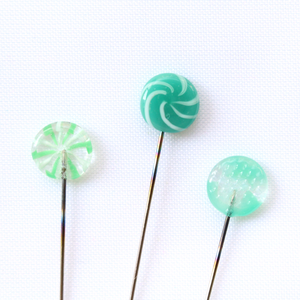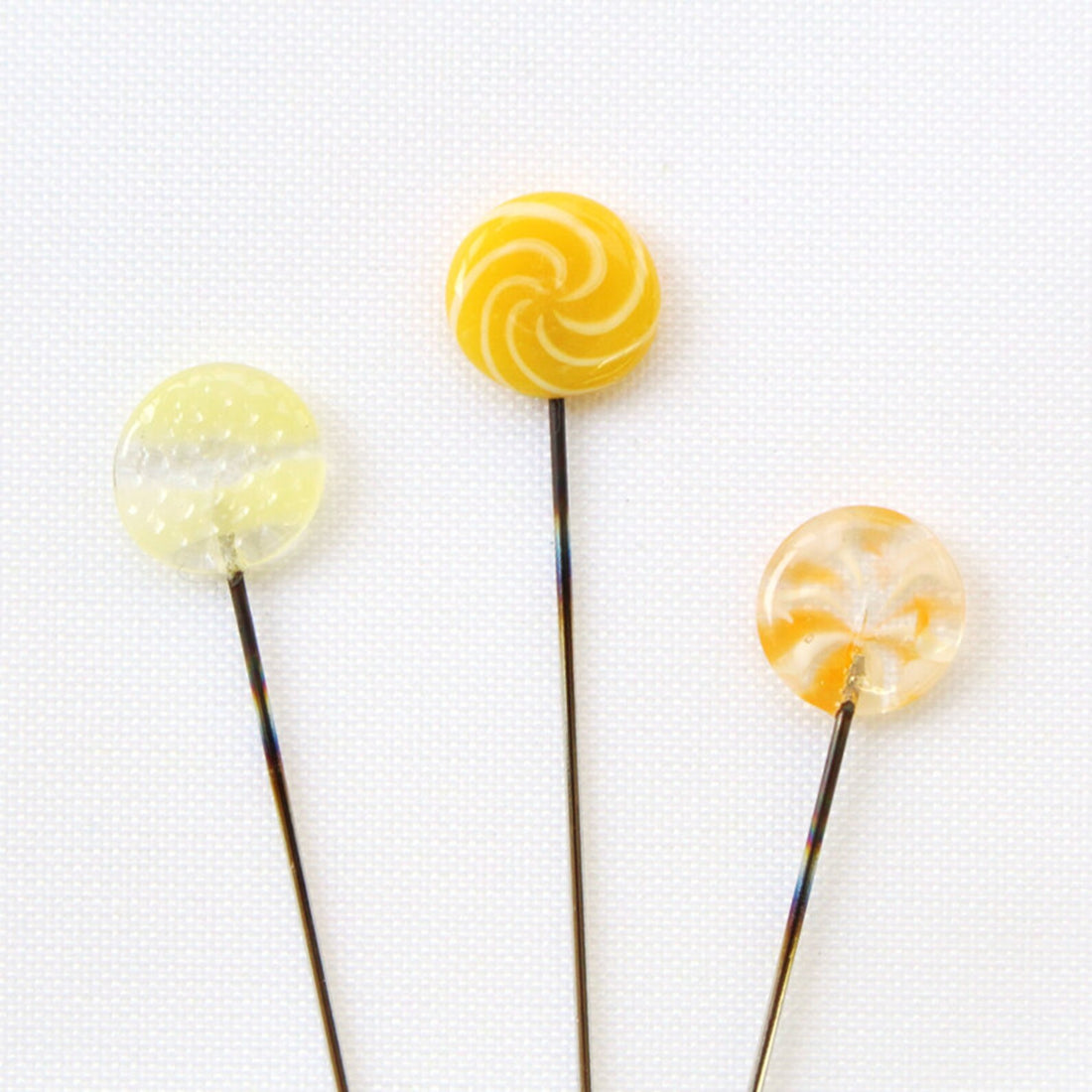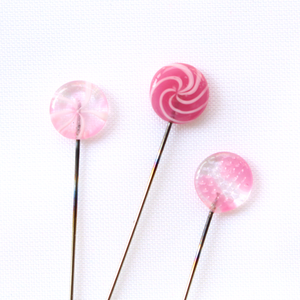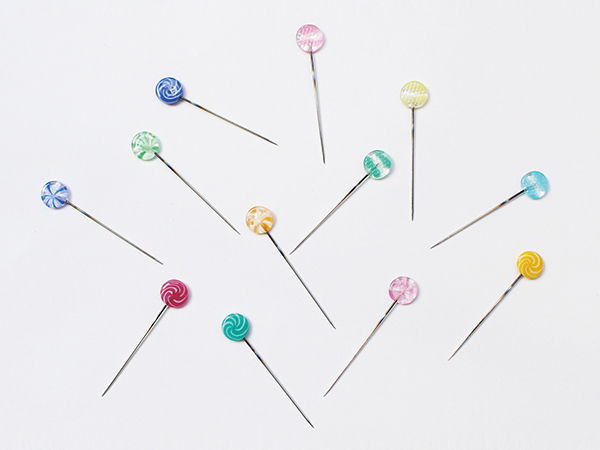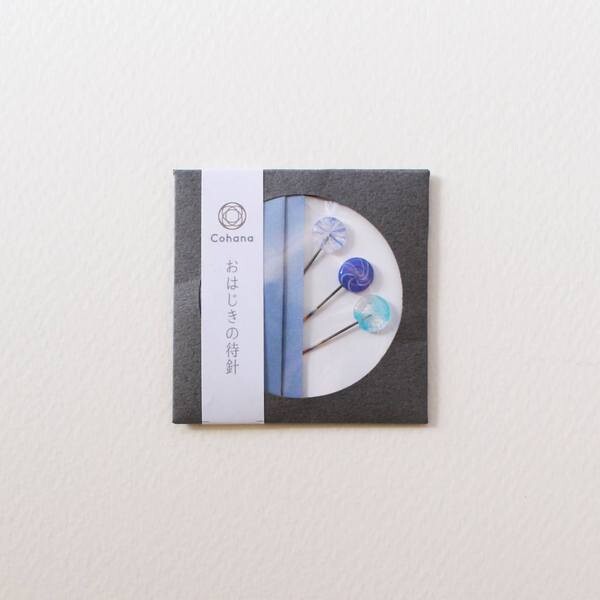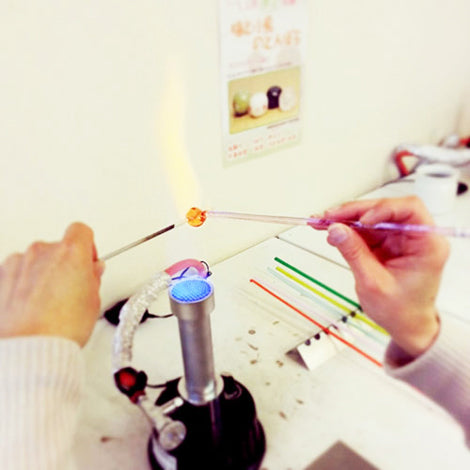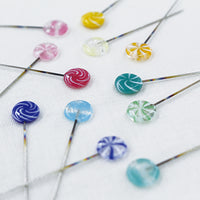
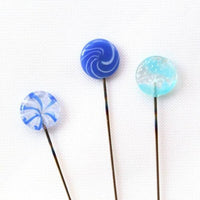
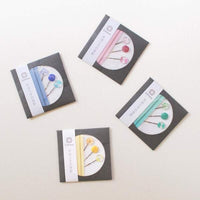
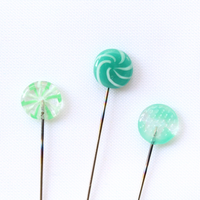
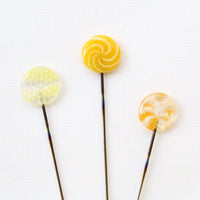
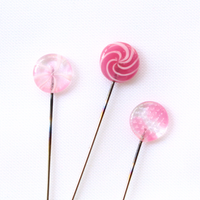
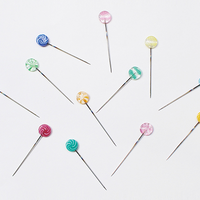
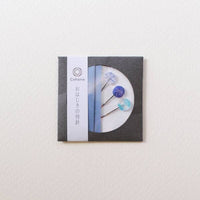
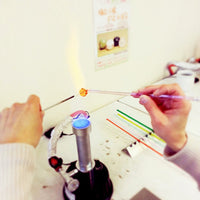
Glass Head Ohajiki Pins
Lollipop, lollipop, oh-la-la lollipop! These swirls remind us of candy from our childhoods! And amazingly they also look like squashed marbles.
These glass-head pins are individually handmade in to look like glass marbles -- Ohajiki no machibari - おはじきの待針.
They are heated and shaped one-by-one in a flame, producing a brilliant array of shapes and colors in the glass "marbles" on the heads of the pins.
The closely-guarded production methods for these mysterious "tombo-dama" (glass beads) was established before the Nara period, which began in 710 A.D. Then, it is said that in the Edo period (1603-1868 A.D.), with much trade arriving from China and Europe, glass-making techniques from abroad influenced the technique and the production of "tombo-dama" became even more varied.
Each pack contains 3 pins. The patterns of "marble" may vary from the image due to the unique nature of these pins.
Made by hand in Japan
Earn [points_amount] when you buy this item.




